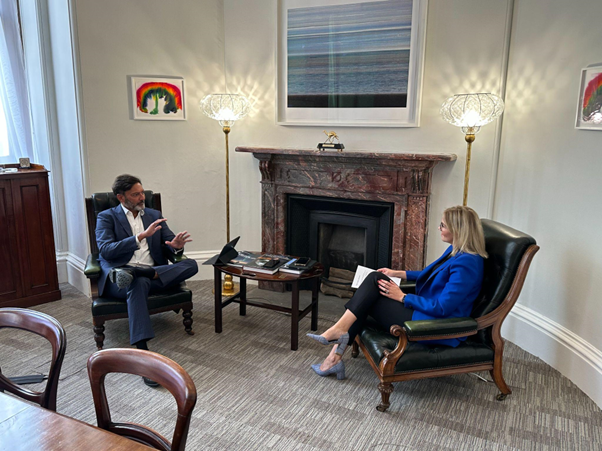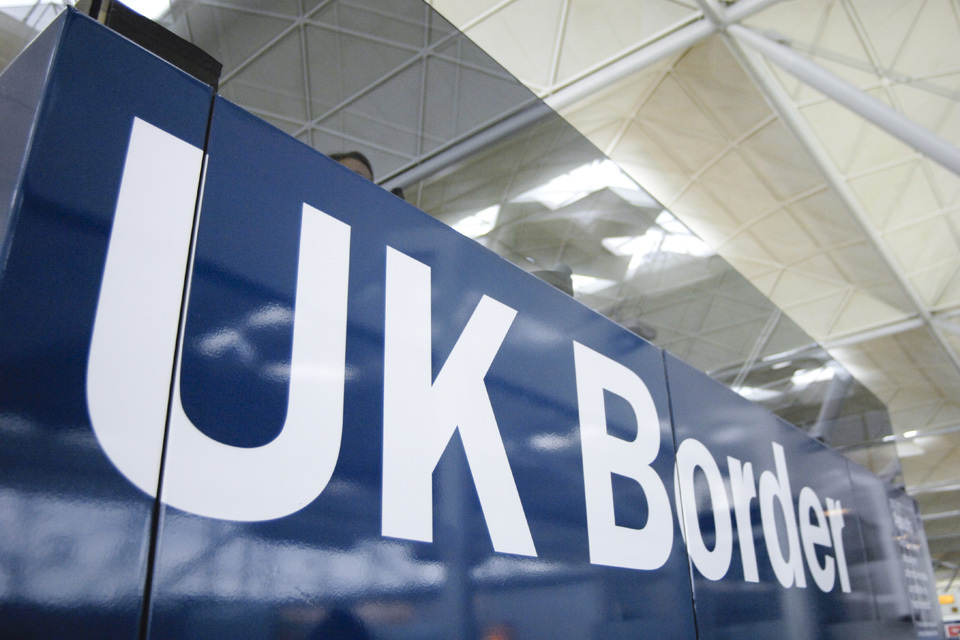After signing a cooperation agreement with GDS, GovTech Singapore’s CEO Kok Ping Soon tells PublicTechnology about how the two agencies can learn from one another
Singapore’s skyline Credit: xPhantomhive/CC BY-SA 3.0
For all that the creation of the Government Digital Service is often characterised as the blueprint commonly used for establishing counterparts in other countries, its Singaporean equivalent has a past – and present – that the UK agency can only dream of.
Singapore GovTech, with which GDS recently signed a cooperation agreement, can trace its history back as far as 1981. And having such a well-established technology body is no doubt a major reason why the Singaporean government can now count 89% of the country’s citizens and 100% of its businesses as regular users of its digital services.
But when GovTech’s predecessor was founded 38 years ago as the National Computer Board, its initial purpose was solely to equip civil servants with computers. Following a merger with other agencies, it then became the Infocomm Development Authority in 1999. The body had a three-pronged remit: to regulate the telecoms industry; to promote Singapore’s ICT sector; and to collectively act as the government’s chief information officer.
In 2016, the last of these three functions was effectively spun out to create GovTech Singapore.
Kok Ping Soon, who joined as chief executive last year, tells PublicTechnology that the creation of a dedicated tech and digital government agency coincided with a change of direction which saw a move away from “large outsourced projects”.
“Many governments are now moving to adopt cloud technology. But, individually, I think we probably have limited leverage over the top providers, and there’s always a concern about how much security is compromised.”
“I think the turning point came sometime in about 2015, where we see a certain shift in the way computing technology has been driven, and we see the rise… of cloud-based services, and software development shifting from a more waterfall method to a more agile method,” he says. “So, we thought there’s an opportunity for us to deliver government services a bit differently – moving away from the monolithic way of doing things to a more services sort of architecture.”
He adds: “We decided to redo our engineering capabilities in-house and to hire our own software engineers, our own scrum masters, our own UX designers, and we decided to try [to] develop government applications differently. So, we did that for about a year or two. And we realised that was probably the way to go.”
Now, the agency has “three lines of business”, Kok says.
The first of these is providing and managing the IT teams of about two thirds of government departments. This adds up to about 1,200 tech professionals.
The second part of GovTech’s remit covers government cybersecurity and managing an annual public procurement purse of SG $2.6bn.
The final strand, which the CEO says most closely resembles the function of GDS, features a total of about 500 developers and other tech specialists representing one of five “capability centres”: data science and artificial intelligence; sensors and internet of things; application development; cybersecurity; and government infrastructure.
This function is collectively responsible for managing five core “platforms” that form the bedrock of digital government in Singapore.
The “digital wellbeing” platform oversees the infrastructure and computing devices of the civil service workforce of 135,000 people, while the smart nation platform is dedicated to improving the public sector’s use of IoT and sensors.
Singapore’s national digital identity programme is another pillar of GovTech’s work, Kok says. The scheme issues all of the country’s citizens with an ID that can then be used as a means of authentication when accessing online government services.
1981
Founding year of Singapore’s National Computer Board – the predecessor to the GovTech agency
SG $2.6bn
Annual procurement spend managed by GovTech Singapore
1,200
IT staff provided by the agency to other government departments
Eight
Number of different agencies whose content and services were brought together in creating a ‘Momen of Life’ service for parents of young children
Another of the agency’s core platforms is the SG Tech Stack – which the CEO compares to GDS’s Platform as a Service suite of tools for allowing agencies to easily develop digital services. The tech stack consists of an infrastructure layer, an application layer, and a micro-services layer.
The newest of GovTech’s five building blocks is the “Moments of Life platform”. This programme is dedicated to putting in place the tech infrastructure to support the development of services across departmental boundaries – in a way that reflect the needs of users, rather than the structure of government.
“Moments of Life is about taking a service-journey approach to government services,” Kok says. “Traditionally, when you think about how governments deliver services, they do it based on their hierarchy… but the reality is people don’t live their lives around how you organise the government – they live their life around the moments that they live.”
One of the first such moments addressed by the programme is the birth and early years of a child. The GovTech chief tells PublicTechnology that, in a child’s early years, Singapore’s government effectively has “just three jobs” to perform for parents.
The first is to register the birth and deliver the ‘baby bonus’ benefit payment awarded by the state. The second is to allow parents to view medical and immunisation records, and the third is to provide searchable information on childcare facilities.
Bringing all these into one place was more complicated than one might assume, Kok says.
“It sounds simple, but just pulling that together requires 40 APIs across eight different agencies. But once we did, we saw the value,” he adds. “In order to do that, you need to have back-end infrastructure that allows you that singular transaction architecture.”
Reaching an understanding
The hard work involved in breaking down siloes and delivering joined-up services may sound familiar to anyone with a passing acquaintance with the UK digital government scene.
Signed last month, GovTech’s memorandum of understanding with the Government Digital Service is, according to Kok, an agreement “between two like-minded organisations who are really quite progressive in leveraging digital technology to transform government”.
He says that the two entities will work together to jointly examine three key questions: “One is how can we better deliver digital services to our respective citizens? Number two, how can we improve our capabilities in respective ICT workforce? And, number three, how can we develop solutions increasingly based on open standards and open solutions?”
The GovTech chief adds: “GDS and us are not competitors – our competitors, if anything, are Facebook and Amazon. Because they are always raising the bar on what good looks like as far as digital service delivery is concerned. And unfortunately, for both of us, our citizens benchmark us to them.”
The exchange of ideas and experiences will focus on three technical areas, Kok says.
The first of these will be comparing the SG Tech Stack with GDS’s Platform as a Service offering to extrapolate what the two approaches can learn from one another. The second will see the two agencies swapping notes on their work with AI technologies, while the final area will be working together to try and get the most out of cloud computing.
“I think many governments are now moving to adopt cloud technology. But, individually, I think we probably have limited leverage over the top providers, and there’s always a concern about how much security is compromised as we move more and more to the cloud,” Kok says. “Certainly, we want to benefit from cloud services and lower hosting costs. But I think the benefit that we can get really is opening up some of the cloud-native services that we use in the way we deliver services. So, I think we want to exchange our experiences, and how we [each] work with the commercial cloud providers.”
“We are taking a service-journey approach to government services. Traditionally, when you think about how governments deliver services, they do it based on their hierarchy… but the reality is people don’t live their lives around how you organise the government.”
The GovTech CEO also picks out two personnel-related issues where he believes his agency can derive value from working with GDS.
One of which is studying the example of the GDS Academy which has, to date, provide technical training to 10,000 civil servants – including advanced courses for digital and data professionals, as well as programmes to boost the tech know-how of the wider civil service.
Kok says: “We are hoping to learn some of the curriculum and see if there’s some of that programme we can use… [in] the uplifting of the ICT workforce, as well as the general workforce in the government [being educated] on digital data technologies – which is also an imperative for me.”
The Mou also provides for the exchange of staff between the two organisations. Plans for doing so are still at an early stage but, according to its CEO, Singapore GovTech is keen to send employees for secondments at GDS of perhaps six or nine months in length. Kok has already targeted certain roles and specialisms where exchanging personnel could be of particular benefit.
“There are a few interesting areas,” he says. “One is user experience, as GDS is very known to be very leading in terms of designing very simple services. While I think GDS is also quite intrigued with the way we are taking our Moments of Life approach.”
He adds: “Another area of interest is site reliability engineering, because both organisations are engineering organisations… and we should be quite concerned about service level – and how to ensure we are masters of our platforms. The third area is really whether we can understand how we can develop standards and guidelines.”
As far as the work GovTech Singapore’s own work is concerned, Kok says that his priorities for the next year include expanding the Moments of Life programme and ensuring that the agency’s other platforms “are more scalable, more reliable, and serve a larger group of users”.
He adds: “And my final objective is: how do I make every government agency a digital organisation, and every public officer digitally enabled? I think that’s my definition of success.”



